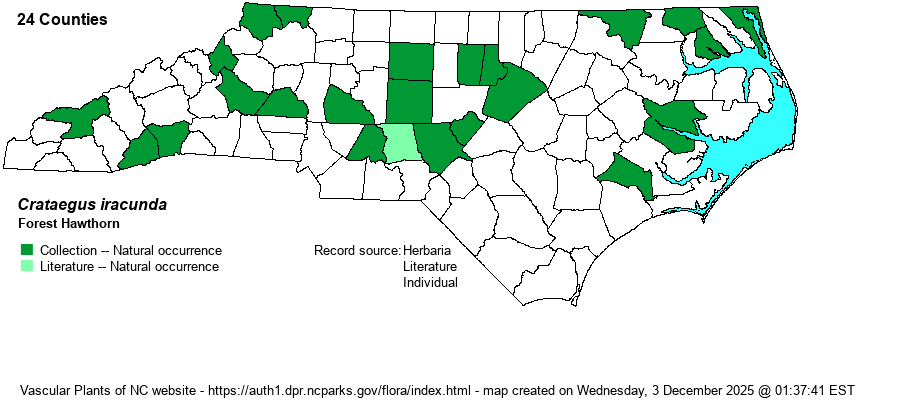Show/Hide Synonym
| taxonName | relationship | relatedTaxonName | relatedTaxonRefText | relComments |
|---|
|
|
|
| Crataegus iracunda | < | Crataegus flabellata | Gleason and Cronquist (1991) | | | Crataegus iracunda | < | Crataegus flabellata | Radford, Ahles, and Bell (1968) | | | Crataegus iracunda | > | Crataegus iracunda var. iracunda | Fernald (1950) | | | Crataegus iracunda | > | Crataegus iracunda var. iracunda | Gleason (1952) | | | Crataegus iracunda | > | Crataegus iracunda var. silvicola | Fernald (1950) | | | Crataegus iracunda | > | Crataegus iracunda var. silvicola | Gleason (1952) | | | Crataegus iracunda | > | Crataegus iracunda | Flora of North America (1993b, 1997, 2000, 2002a, 2002b, 2003a, 2004b, 2005, 2006a, 2006b, 2006c, 2007a, 2009, 2010) | | | Crataegus iracunda | > | Crataegus iracunda | Kalkman in Kubitzki (2004). | | | Crataegus iracunda | > | Crataegus silvicola | Kalkman in Kubitzki (2004). | | | Crataegus iracunda | > | Crataegus drymophila | | | | Crataegus iracunda | > | Crataegus populnea | Fernald (1950) | | | Crataegus iracunda | > | Crataegus populnea | Flora of North America (1993b, 1997, 2000, 2002a, 2002b, 2003a, 2004b, 2005, 2006a, 2006b, 2006c, 2007a, 2009, 2010) | | | Crataegus iracunda | > | Crataegus populnea | Gleason (1952) | | | Crataegus iracunda | > | Crataegus riparia | | | | Crataegus iracunda | > | Crataegus sectilis | | | | Crataegus iracunda | > | Crataegus shallotte | | | | Crataegus iracunda | > | Crataegus iracunda var. iracunda | Kalkman in Kubitzki (2004). | | | Crataegus iracunda | > | Crataegus iracunda var. populnea | Kalkman in Kubitzki (2004). | | | Source: Weakley's Flora |
|

